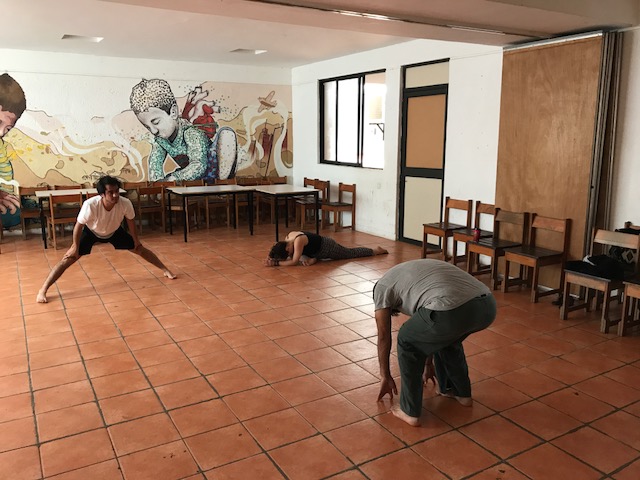By Brian Seilstad, Ph.D. Candidate, Department of Education, Teaching and Learning, The Ohio State University.
The changes in the U.S. demographics in the last ~40 years have been dramatic, leading to a more diverse population overall in terms of ethnic, racial, or linguistic backgrounds in addition to distinctions in legal status, transnational aspirations, bi/multilingual identities, etc. Ohio, its urban areas most specifically and Columbus in particular, is among those areas that have experienced these shifts.
My research focuses on one manifestation of this phenomenon, how the state and city support adolescent newcomers who face intense pressure to master the language and content necessary for success in schools and beyond. This work is primarily ethnographic and discourse analytic, investigating a specific local program, one cohort of students, and the environment and processes of meaning-making designed to support students in and out of the classroom.
I conducted my fieldwork during the 2016-2017 academic year and have spent the 2017-2018 year analyzing data and writing the dissertation. Thus, nearing the end of my Ph.D. journey, the Global Mobility Project’s funding allowed me to share this research at two major conferences—Teaching English to Speakers of Other Languages (TESOL) and the American Educational Research Association (AERA)—and to explore a notable adolescent newcomer program model, the Internationals Network of Public Schools, perhaps the most prominent adolescent newcomer programs in the nation. These schools, similar to the local program I researched, serve students from dozens of countries and language groups.
At TESOL, I presented a key argument in my dissertation—that the local program reflects an “English-centric” ideology that manifests from the macro-level of the state/national standards, the meso-level of institutional structures, to the micro level of daily classroom interactions. I suggest that this ideology is perhaps an improvement over many “English-only” ideologies and spaces but still often falls short of meeting many students’ needs. In contrast, at AERA, I presented more micro-level data documenting the translanguaging practices of students in the program, focusing on how the English word “chick” is heard by Nepali speakers in the class as a “Nepali bad word” which then morphs into another bad word “chicki-chicki” and blends with the Daddy Yankee song “Shaky Shaky.” I argue that these insights contribute to understandings about translanguaging by moving beyond individual speech events, tracking them across time, and reflecting adolescents’ interest in sexuality, popular culture, and peer relationships. At both conferences, I was pleased to have the opportunity to meet and connect directly with a number of scholars active in this field such as Drs. Holly Hansen-Thomas, Mandy Stewart, Mark Pacheco, and Nelson Flores.
As AERA was in New York City, I had the opportunity to visit Claremont International, a school in the Internationals Network, and the visit to the school reinforced many of the conclusions in my dissertation. Among these is the importance of an inviting linguistic landscape, as evidenced with the school’s and main office’s welcome signs.
This is also reflected in the pedagogy of the individual classroom where students are organized by two-year cohorts where the second year students, who have improved their English ability, can help first year students acclimate to the program and academic tasks. During classroom visits, I was pleased to see students collaborating in small groups that changed frequently to encourage different interactional possibilities across the content areas. In a meeting with students, many commented that this arrangement was challenging but supportive through enhanced collaboration and communication across multiple domains.
This ethos is further reflected in other school signs such as these below:
Of course, there are a number of contrasts to the local program and my research. One that remains is to what degree adolescent newcomer programs support and develop students’ home languages. The Claremont program did have a specific course in “Native Language Arts,” but it was unclear to me how many students were able to access these options or what languages were available. My perspective, drawing on my own work and broader reading, is that these programs will frequently leave students behind if their home languages are not directly supported and engaged in the learning process, not only of English but of the home languages per se.
























